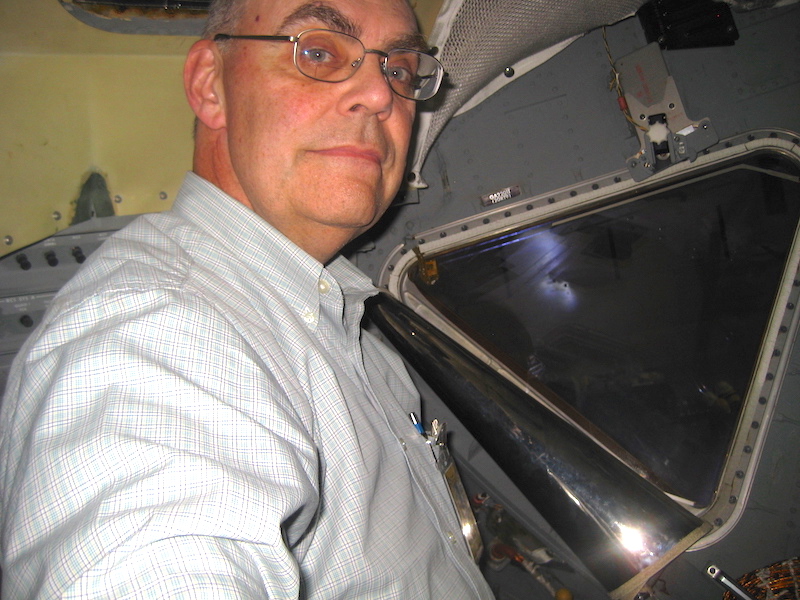
I am an aerospace artist/illustrator with a special enthusiasm for spaceflight. I was a NASA artist at the end of the Apollo program and since then I have done many illustrations for space agencies, companies, and publications. I am obsessed with accuracy so all my art is deeply researched. I want to make a visual "record" of great moments in the history of space exploration.
I don't copy from photos, nor do I use computer rendering. I paint in acrylics and with the fabulous Procreate app on an iPad Pro.
Photo: Selfie in LM-2! I was the contract lead for the Smithsonian's Apollo Lunar Module restoration.
Also: How to pronounce my name — fee-YELL. It's Norwegian.
 for announcements only. Contact: admin@pfinspace.com
for announcements only. Contact: admin@pfinspace.com
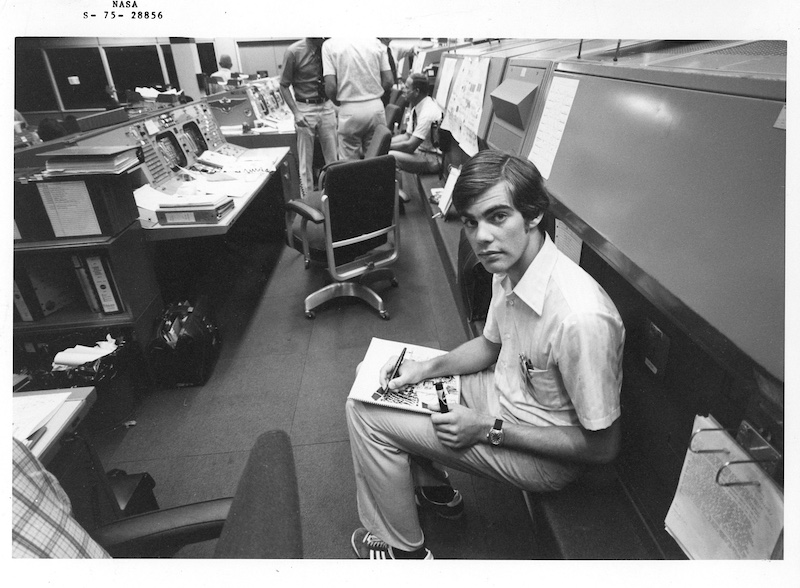
Me in the MOCR
The best professional experience I've had is working as a NASA artist in Mission Control, Houston for the Apollo/Soyuz flight. The place was actually called the Mission Operations Control Room and it was filled with the heroes of my youth. I was intimidated but fortunately I was the junior partner to Bob McCall, the great artist himself and super good guy, and he made me feel like I belonged there. I did hide as best I could anyway (difficult for a 6' 4" beanpole) so I wasn't getting much good coverage. Somehow Chris Kraft, the boss of the place, noticed. He came over to me and said how much they loved having the NASA art people in with them and that I should feel comfortable doing my job. By the end of the mission I was sitting between the capcom and the flight director. Pat Patnesky, the official NASA Mission Control photographer, took this picture and it was put into the NASA JSC system, so I want to leave the frame on.
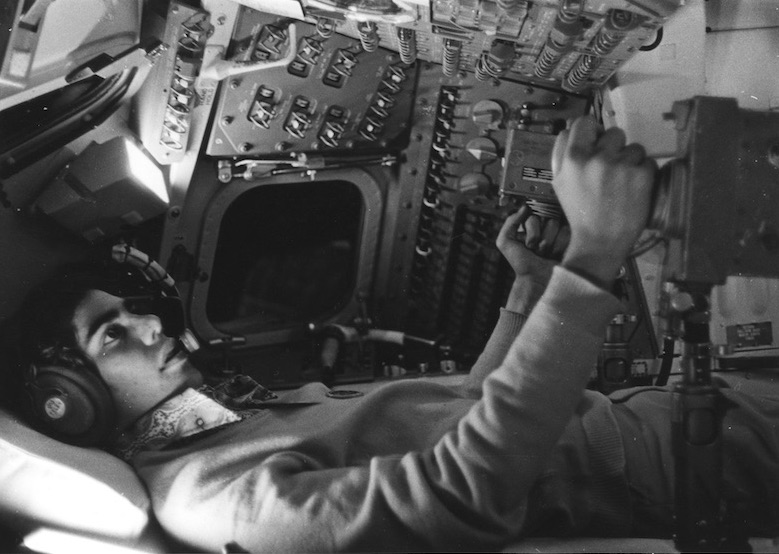
In the Apollo Simulator
Switch monkey! That's what I got to play at in the actual Apollo Command Module simulator that every crew trained in. During the Apollo 17 mission we got a press tour of the Building 5 training facility and it included a quick launch simulation. I asked some questions of the trainer and he suggested I come back later. Well, he ended up letting me stay overnight while maintenance was being done for the next day's sims. I got to use the part of the system that wasn't being worked on as long as I kept the comm channel open so that I could be useful. If they needed a circuit breaker or switch changed, they'd tell me and I would push, pull, turn, or flip the thing, saving them the trouble of taking their shoes off, climbing the stairway, and levering themselves into the cockpit. I put in nearly 30 hours of "training" covering almost every system. And, had I flown, I would have killed everyone.
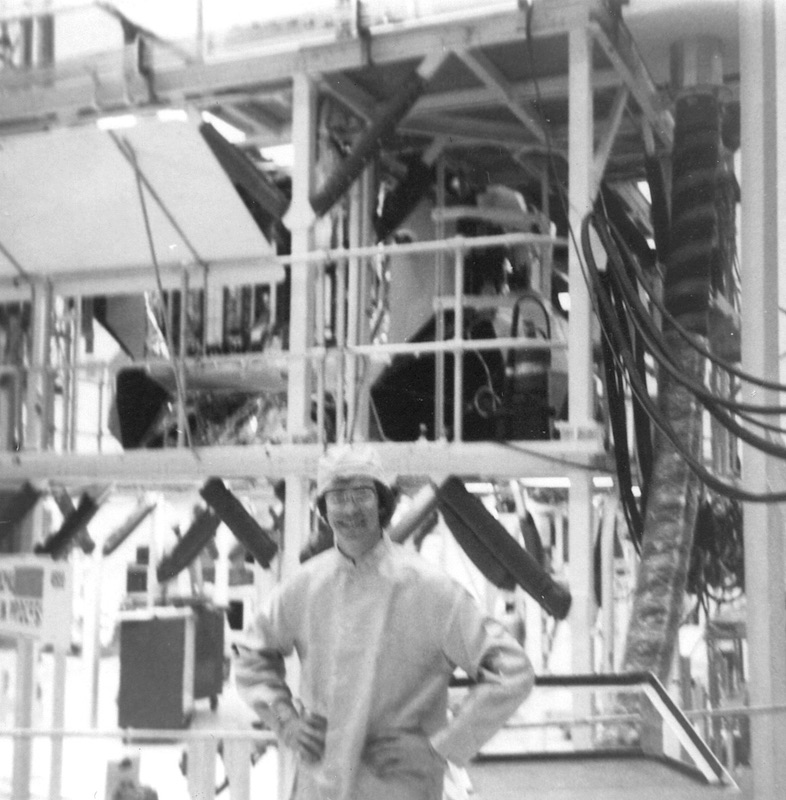
LM-12 Challenger
All spacecraft need to be prepared for launch near the launch pad. At the Kennedy Space Center, for Apollo, there was a special huge clean room called, alternatively, the Operations and Checkout Building or the Manned Spacecraft Operations Building. I think it was the MSOB when I had the good fortune to get on a tour while they still had the spacecraft for Apollo 17 inside. The Lunar Module was my favorite thing and to get a chance to see up-close the last one to fly was wonderful. Some of the Grummanites that worked on the LM were hanging around near the roped off area so I got my first chance to meet some of them. I had no idea that, twenty years later, I would be so involved with the LM and the company that built it.
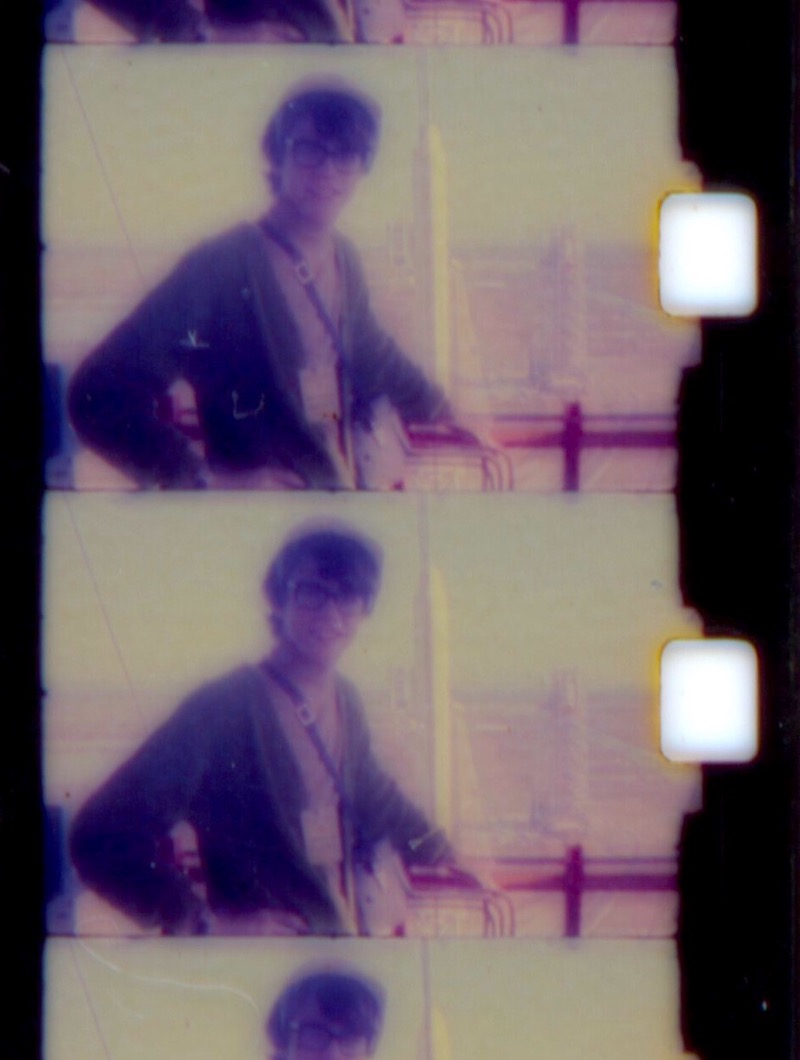
Apollo 16 Rollout
Here you can barely make out an absurd vista. A sixteen year old kid is hanging on to a railing 360 feet up the tower of a Mobile Launcher as it is being carried to Launch Pad 39A with its cargo of Apollo 16. This rollout of the Saturn V was the first of two for the mission and the press were taken in small batches to the monster as its crawler-transporter inched its way to the pad. We got to walk around the base of the rocket then go up in a little elevator to near the top. As we moved up, the slight swaying of the tower became more pronounced until, dumped out in the open, the feeling was like experiencing a small earth tremor that wouldn't stop. But the view was tremendous, looking down the rocket, back at the Mobile Service Structure, and way back at the Vehicle Assembly Building, barely visible here behind the Launch Escape Tower. These terrible frames are from some 8mm film that I took of the whole experience. When I got all the little reels back home, the lab ruined them in the developer. They gave me free rolls as an apology.
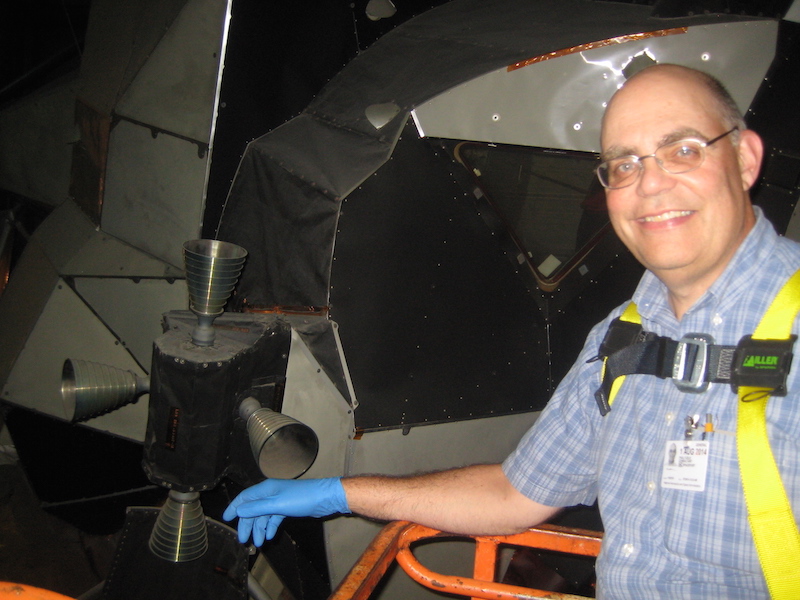
Up on LM-9
NASA's design for the Apollo program was to have spacecraft and rockets for missions up to Apollo 20. This meant that Grumman was contracted to build 15 Lunar Modules. When LM-3 missed its flight on Apollo 8, LM-15 was cancelled. Soon after, LM-14 was lost with Apollo 20. The final squeeze came in September, 1970 when Apollos 15 and 19 were cancelled. LM-13 was partly built but LM-9 was finished and getting ready to fly Dave Scott's crew. LM-10, the first of the extended spacecraft that carried a rover, got shuffled down to Apollo 15 and LM-9 was left a hangar queen. Some bits were removed and then it was put on display. It was hung over the lunch area in the Apollo/Saturn V center as part of the KSC experience, slowly degrading until a major effort to restore it was started in 2014. I was hired as a technical advisor, wrote up a survey and then a restoration plan which Guard Lee excuted beautifully. As part of the survey I had a couple of nights in the lift moving around the Lunar Module and examining every part in minute detail. LM-9 has now been lowered to its proper hero position below the tip of the rocket and remains the best example of a Lunar Module.
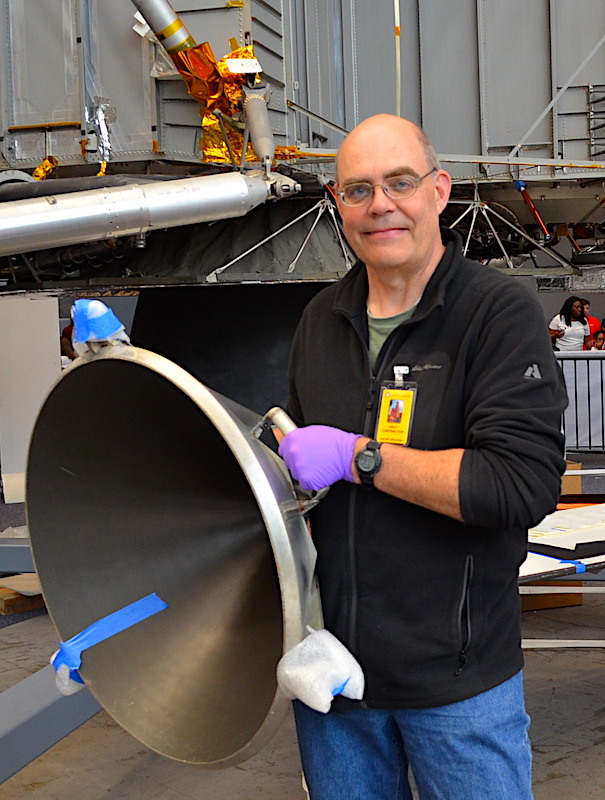
LM-2 Install
Lunar Module 2 is the only LM designed to be a "switch hitter", that is, to be capable of flying with crew or unpiloted. The first LM was a test of the spacecraft without astronauts, but if it had been unsuccessful, the mission would have been flown with LM-2. Instead LM-2 should have gotten a crew and flown. This was the plan before the Apollo 1 fire laid down a requirement for the Apollo spacecraft to have extensive fire-proofing installed. It was too late for LM-2 so, instead of flying, it became a dedicated uncrewed backup to LM-1, then a guinea pig for power-on drop tests to qualify Apollo 11 for landing. Once its role was complete, it became the country's display LM at the Smithsonian Institution. I was involved in a partial restoration of it in 2009, then the lead for a complete restoration in 2015-16. Here I am holding a flight drogue we chose out of the Air and Space collection and were about to install. We had to practice carefully transferring the drogue into the cabin so we wouldn't bash any of the delicate surfaces of the spacecraft.
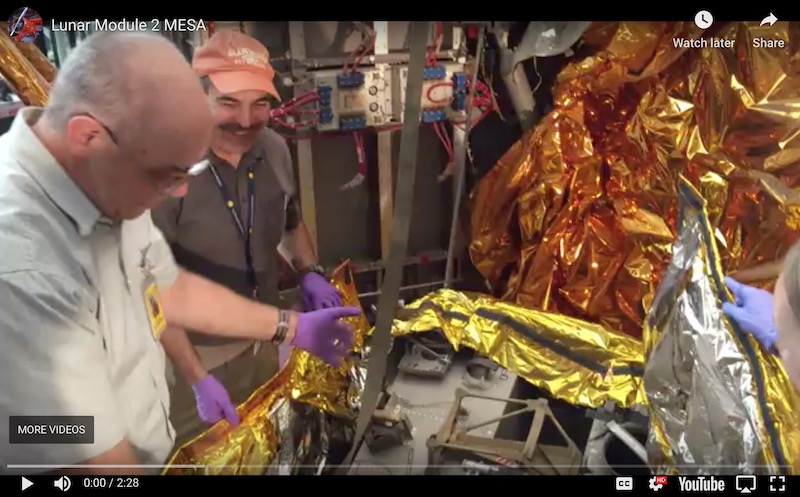
LM-2 MESA video
One of the best moments of restoring LM-2 was dropping the MESA, a box with tools and the TV camera, down from its stowed position. This had never been done since it came to the Smithsonian in 1971. What we discovered was a perfect flight example of the MESA with a completely correct and displayable thermal blanket. We made this video not an hour after we had figured out that we had something great. I made a couple of mistakes in my description: the cable for the TV let the astronauts go 25 to 30 meters (not feet) away and the lens holders were for the wide angle TV lens, that took the first step view, and the narrow angle lens that was used when the camera was on its tripod. I should have known that, but I was pretty excited. Also, other missions carried the solar wind experiment...
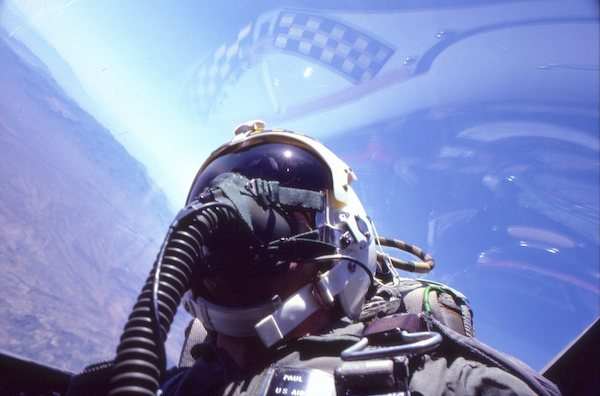
GIB of an F4E
So this looks really cool and I can't believe I got to do it. I am the "Guy In Back" in an F-4E Phantom (Rhino) fighter jet, flying out of Nellis AFB, pulling some "G's" as part of my experience with the U.S. Air Force Art Program. I also got to fly in an F-15B and F-111D where I learned, among other things, that flying high performance jets is about as close as I'll ever get to spaceflight, that I could withstand "G" loads up to six without passing out (it was close!), and that fighter pilot jargon is the best. We did some "yankin' & bankin'" when we were "beak to beak in the merge" and there were no "groceries lunging for daylight" in my part of the cockpit.

 for announcements only. Contact: admin@pfinspace.com
for announcements only. Contact: admin@pfinspace.com








